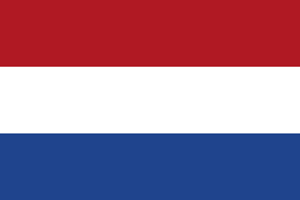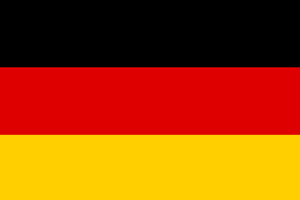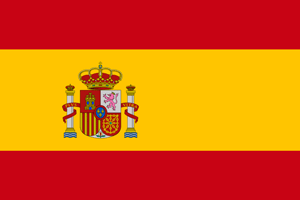
Historia de la marca Matrimatic de Matri
Matri máquinas de coser desde 1929
Historia de la marca Matrimatic
Matri, fundada en 1929 cuenta con muchísima experiencia en todo tipo de máquinas de coser, remalladoras y máquinas de bordado. Tras estos años de experiencia, el próximo paso de Matri, lógicamente era crear una propia marca, llamada Matrimatic.
La marca Matrimatic ha sido creada con la intención de desarrollar máquinas versátiles y resistentes a un precio económico.
Ya sea para un principiante o un/a costurero/a con experiencia, la Matrimatic con sus exigencias, les gustará a todas/os.
Una de las máquinas más famosas de coser de la marca Matrimatic es la Jubileo 4:
fuerte y fácil de usar, a un precio muy asequible.
Por supuesto, las máquinas de coser que llevan nuestra propia marca son de la más alta calidad. La Matrimatic se caracteriza por la facilidad y comodidad de su uso, con un enhebrado automático, brazo libre, variedad de puntadas, y por tener la mejor relación precio/calidad.
Historia de la máquina de coser
Around 1700, the Renaissance period. Clothing with lots of bells and whistles. At that time,
yet everything was made by hand. If there was a need for something, it would have been the
sewing machine.
The German Weisenthal, who in 1755 lived in England, invented a needle that had a sharp point
at both sides and an eye in the middle. Others, like Madersperger and Greenhough, used this
needle also. They are still found today in the embroidery industry.
In 1790, the English cabinetmaker Thomas Saint applies for a patent for a wooden sewing
machine with which a chain stitch could be made. Saint Thomas is considered the inventor of
the sewing machine. His chain-stitch machine was designed for use in workshops for making
shoes and boots, the heavier work so to speak
In 1800 Balthazar Krems from Mayen in Germany, manufacturer of nightcaps invented the
stretch chain stitch. He first used a needle with the eye at the point. He obtained, as a
result a loop on the underside of the fabric.
In 1814 The Master Tailor Joseph Madersperger from Kufstein, Austria, constructs a two needle
sewing machine to sew blankets. Since his resources failed, he could not get this machine
into production. He died in 1850 at age 82, in Vienna in a retirement home for the needy.
The Frenchman Barthelemy Thimonnier from Arbeste, the French Rhone department, received a
patent in 1830 on his chain stitch machine. But an ignorant and angry mob of tailors, who
saw in his machine a threat to their profession, destroyed most of his machines. Thimonnier
fled and never recovered from that fateful battle. As a poor show-director, he demonstrated
later on his machine in the circus, as a mechanical curiosity. He was overjoyed while doing
these demonstrations. He died in 1857 completely penniless. This Thimonnier machine had to
sew every stitch by the push of the pedal. The loops of the chain stitch layers on top of the
fabric. The seamstress had the responsibility to ensure that the fabric, after each stitch,
was pushed further sidewise to obtain the same stitch length wise
In 1834 Walter Hunt, a typical self-made man (his designs include the first safety pin and
the first fountain pen), between 1832 and 1839 was particularly interested by the sewing
machine. He succeeded, by means of a shuttle for the first time to form a lock stitch as we
know it today. He is the founder of the sewing principle, where 2 threads are used, a lower
and an upper thread.
In 1845, The American Elias Howe, from Spencer (Massachussetts) also built one of the first machines in which the second thread is used in a shuttle. It is very likely that the shuttle of the weaving looms has inspired the American mechanics. Howe's success depended for years on this invention. When he, in 1845, with his friend and financier Fisher, sewed a garment with his newly long shuttle machine first with a double stitch, he believed to have reached his goal. Meanwhile, other Americans had been busy perfecting the sewing machine. His main rival, Isaac Merrit Singer, constructed a similar machine, and of course it came to a process for right of priority. After long litigation Howe won the process. It is calculated that Howe received, in the form of royalties on machines made up to the period of the expiry of his extended patent -- September 1867 -- which was also the month of his death, a sum of not less than two millions of dollars. With his own resources he equipped, during the American Civil War, a whole military brigade. He died at the age of 48 in 1867
In 1850 A license is granted to Wheeler & Wilson, of Bridgeport (Connecticut) in the United States. Allen B. Wilson built the first sewing machine with rotating hook, which is known generally as the Wheeler & Wilson principle. The rotary hook, is beveled and notched so that it opens and expands the upper thread loop, causing it quite to enclose the bobbin of under thread, after which it throws it off and the so-formed lock stitch is pulled up and tightened either by an independent take-up motion as in recent machines, or by the expansion of the next loop as in the older forms. The bobbin , lenticular in form, and its case, fit easily
into a circular depression within the hook, against which they are held by the bobbin holder. The Wheeler & Wilson Sewing Machine Company was very leading in the area, but was not financially strong enough to exploit the rapid evolution. She was bought by the Singer Company. Isaac Merrit Singer, a former circus director has the great merit of making the sewing machine available to the general public. He is the great developer of the American sewing machine industry.
The first machine made by Isaac Merrit Singer was patented in 1851.
This sewing machine was packed in a wooden box which when opened could be used as a treadle
machine. Singer did not realize that he could patent this invention. When pointed out to
him it was too late, the treadle was already in public use. This machine was very heavy and
more suitable for industrial than household use.
1851-1860 Creation of a new generation of machines. The German names like Koch, Gritzner, Pfaff, Kayser, Muller, Mundlos, Durkopp, Biesolt, Locke, Nothmann, Bear and Rempel, were then known to the world. Only Pfaff is left. The base of the Pfaff Industry was laid by Georg Michael Pfaff.
A small chain stitch machine1855 of the Company Seeling from Paris. Elegant but no closed
form. The spool is located on the needle bar.
1858 In America, more than 100,000 sewing machines already in are in use and enterprising engineers start being interested in sewing machine and later manufacture. The machine shown is a chain stitch.
1860 This elegant machine is constructed in France and has a free arm.
An improved model of Howe in 1860. Features: a perpendicular needle insertion, a straight
needle, a big long bobbin and a flywheel at the bottom.
The original Singer machine was heavy and uncomfortable fo home use, but in1858 Singer
brought a lightweight Singer Family Machine on the market, and in 1865 the additional New
Family Machine. This machine was in production for about 20 years and more than 4 million
machines were produced. Generally, this machine was similar to the machines that were produced in the early 20th century.
1867 A small machine that is strikingly similar to a children's machine it seems. This
machine was produced by the firm of Wanzer & Co. from Hammilton from Canada and has a winding
spool.
1870 More and more machines are produced with a bobbin, this machine was manufactured in Rouen.
This machine works with a chain stitch, the speed is getting more and more important
this machine makes 200 stitches per minute.
1878 The small "Legat" from Paris. A model with a oscilating shuttle, which by pressing the
button is being started. Horizontal osculating shuttle.
In 1879 William Jones from Guide Bridge, Lancashire took their first sewing machine patent in 1869 and founded a company which is still manufactures sewing machines. This type of hand
machine was in production from 1879 to 1909. This machine was manufactured for export to
tropical countries. The non-painted parts were chrome plated to prevent rusting and came with
a steel case.
1880 The 'Original Rhemania' of the Firm Junker & Ruh. A real German construction: Solid and heavy construction. Long shuttle. The upper back can be overturned. Drive is done by means of the large hand wheel.
1882 The year of the zig-zag machine.
The first zig-usable zag machine sees the world. The German, John Kayser, from Kaiserslautern, takes them to the market. Kaysers construction made it possible to set the zigzag stitch larger or smaller by the use of the zigzag button. This machine has already an elongated hole of the needle plate, as this is the case today with the modern zig-zag machines.
This sewing machine was manufactured in 1888 and is the last model made by the Howe Machine
Company, which after the death of Elias Howe in 1867 was conducted by his sons. Although Howe
had a patent on its method of manufacture of sewing machines since 1850, he produced himself
not before 1865. Meanwhile his brother Amasa produced from 1854 sewing machines under the name of the Home Sewing Machine Company, which lasted until 1873
1900-1940 A period without any significant developments. Besides the sewing machine with the
shuttle, the machine with the bobbin becomes very popular. The models in this period hardly changed and all the machines were and remained black in color with gold and silver ornaments and often inlaid with mother of pearl.
However, new is, the introduction of the Pfaff 130 zigzag sewing machine with rotary hook, designed by a Dutch engineer. Particularly suitable for tailors and home producers.
Until approximately 1950, hundreds of thousands of this type of machines is produced. Today,
this machine is still very popular in countries like Pakistan and India, where it is used for the home industry.
1940 The sewing machines which until 1940 were on the market were made of cast iron, were so
heavy in weight, had a black color, were called flat design and were operated by hand or threadle.
In 1940, a turnaround in the sewing machine industry. The Elna-I comes on the market. As the inventor-constructor, (ir Ramond Casas, originating Spaniard which later emigrated to Switzerland) until that moment had never been engaged in sewing machines, and was not influenced by certain design principles, produced a totally different kind of sewing machine:
- the machine was made of light metal and was therefore truly portable
- because the machine housing was manufactured from light metal, the whole mechanism had to be modified accordingly, so the machine would be in complete balance while in use
- In contrast to the hitherto conventional black color, this machine has been released in a modern green color
- in the construction, the inventor also sought simplicity in operation
- The machine was equipped with a built-in motor
- the machine was equipped with built-in sewing light
- The machine was fitted with a free arm (up to then only known by the sewing machines industry)
- the machine was packed in a metal case, which also could serve as an extension table
All this brought lots of change in the household sewing machine industry. Due to the success
Elna had other brands worldwide were other brands machines more or less forced to follow Elnas path.
In 1952 Elna caused another revolution, by the release of the Elna Super Matic. This machine,
which works by means of loose interchangeable cams, it was possible to change the sequence of
the left-right movement of the needle. This made it possible to manufacture decorative
stitching, based on zigzag but also practical stitching as the serpentine line, the blind
hem, etc.
But not only this! Because it was also possible with the "double" cams, to regulate forward and backward transporting of the fabric, thus it was possible to obtain any desired pattern.
But mostly practical stitching with backwards moving. Like the household overlock the stretch
triple reinforced seams etc.
The basis of this principle, we are still finding in modern machines, with the difference
that these modern machines are generally computer controlled.





